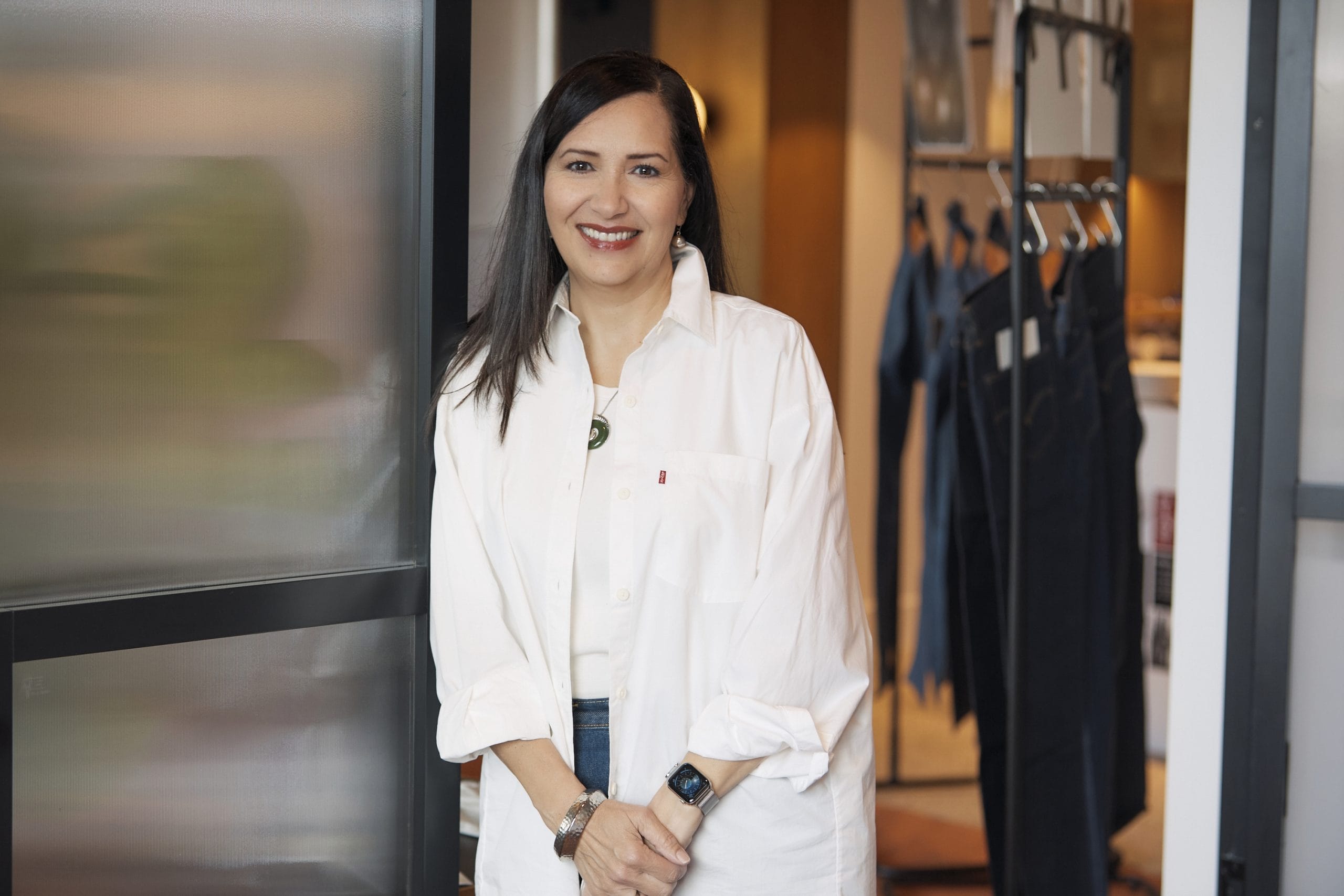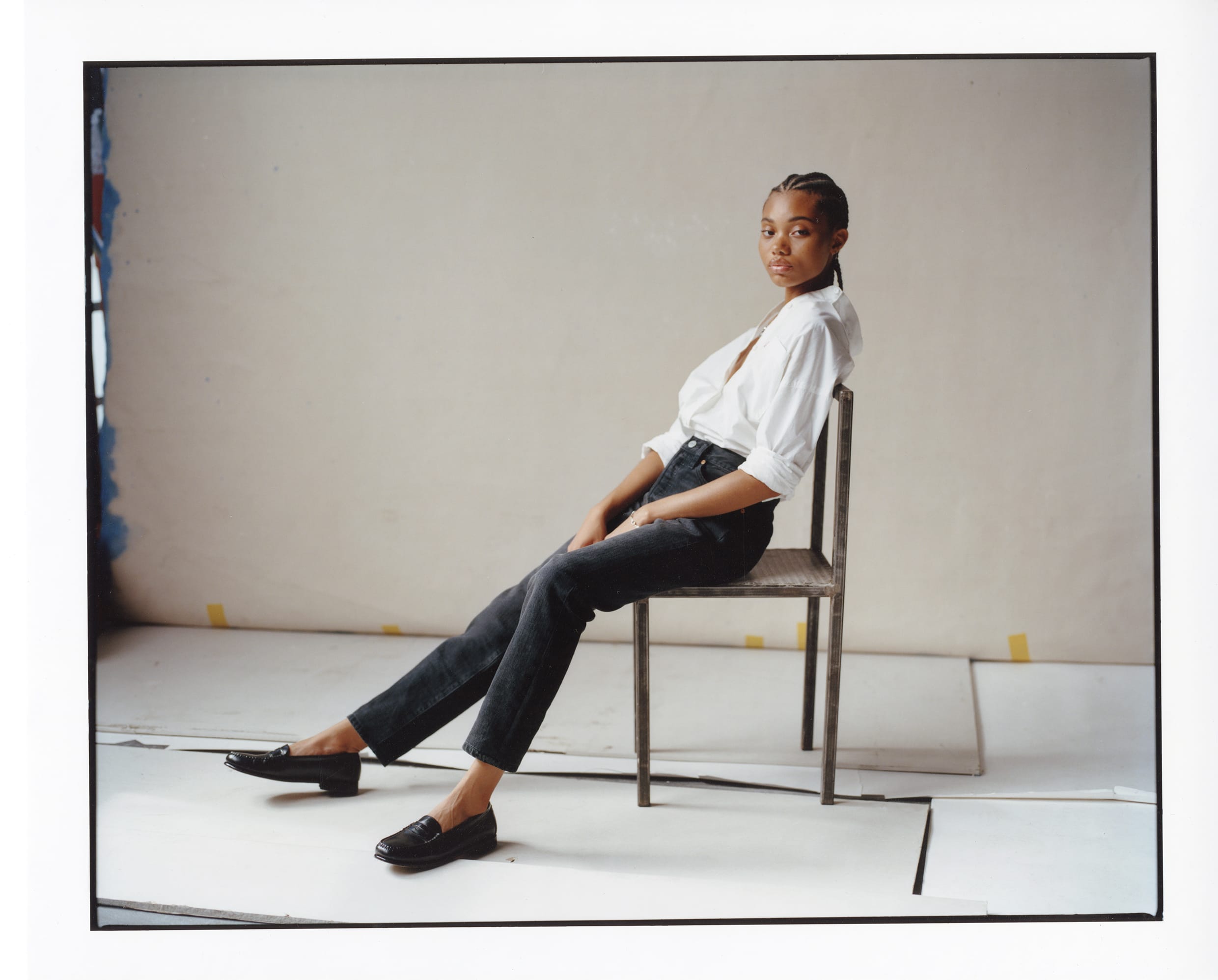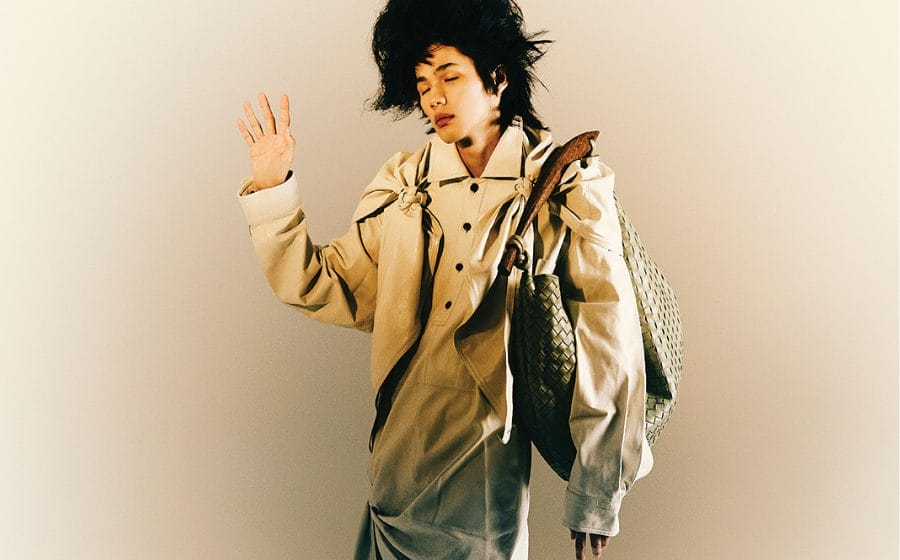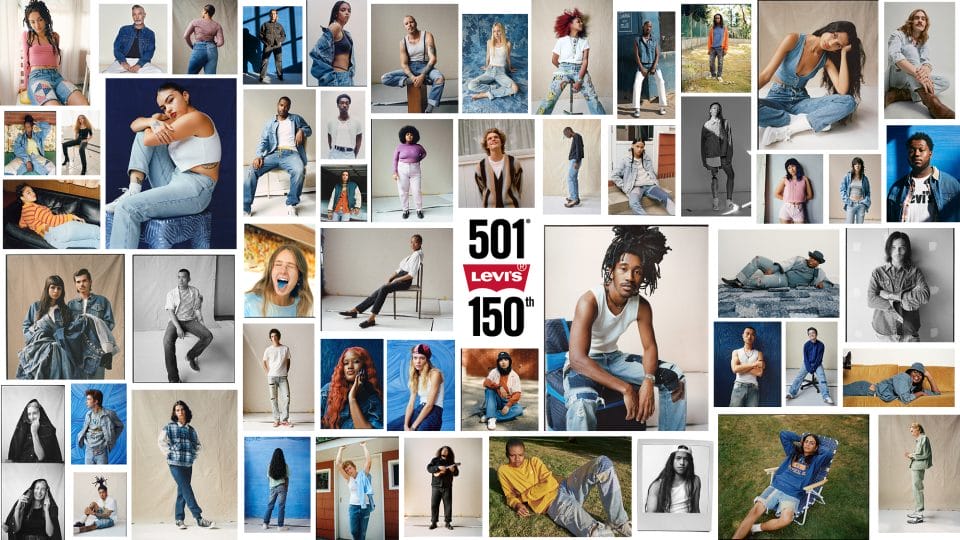 Few things come to mind when you hear the digit 501, it could be your bus route or flight number, but none is more iconic than the Levi’s 501 jeans. The story of the Levi’s 501 jeans began exactly 150 years ago, thanks to Levi Strauss and Jacob Davis. A collaboration between the two men changed the course of workwear pants thanks to an innovative idea — adding rivets to strengthen them. That marked the birth of blue jeans though what was once created as a solution for blue-collar workers in the past is now regarded as a cultural icon. Its ubiquity permeates seemingly all rungs of life today as blue jeans are just about worn everywhere in the world, thanks to the Levi’s 501.
Few things come to mind when you hear the digit 501, it could be your bus route or flight number, but none is more iconic than the Levi’s 501 jeans. The story of the Levi’s 501 jeans began exactly 150 years ago, thanks to Levi Strauss and Jacob Davis. A collaboration between the two men changed the course of workwear pants thanks to an innovative idea — adding rivets to strengthen them. That marked the birth of blue jeans though what was once created as a solution for blue-collar workers in the past is now regarded as a cultural icon. Its ubiquity permeates seemingly all rungs of life today as blue jeans are just about worn everywhere in the world, thanks to the Levi’s 501.
As the brand gears ups for its 150th-anniversary celebration on 20 May, Men’s Folio met up with Levi’s Collections Design Director Paul O’Neill and Levi’s Historian Tracey Panek to chat more about the iconic Levi’s 501.
Tell us a little about your positions at Levi’s and what is your day to day like.
Tracey: I’m the historian, and I do many traditional, historical things that vary daily. I work with designers like Paul, getting things out from the archives. I answer historical questions internally, so I’ll have to review them for accuracy. I also answer questions from Levi’s fans worldwide. I work with museums and other historical agencies for exhibitions and other projects. The other part of my job is always being on the lookout for pieces to add to the archives.
Paul : I’m the design director for Levi’s collections. I’ve been working on Levi’s Vintage Clothing for nearly 15 years. I also manage Levi’s Skate and Levi’s Made in Japan, but Levi’s Vintage Clothing is something that I’ve been focused on, especially this year with the 150th anniversary. My day-to-day can be doing a photo shoot about the gold rush, being in a fitting session, or reviewing denim washes. Sometimes I’ve got three seasons happening at once, so I could be off doing a photo shoot for one collection while briefing another and reviewing products for the third. Every day looks different, but it’s always exciting.
Tracey, there are so many records regarding the archives and historical pieces. What’s something interesting that stood out when you went through some of them?
Well, there are always new and interesting stories. The story I shared about Barbara Hunter and her finding a pair of 501s in the Calico Mines in the 40s and having them in the archives is a wonderful example.
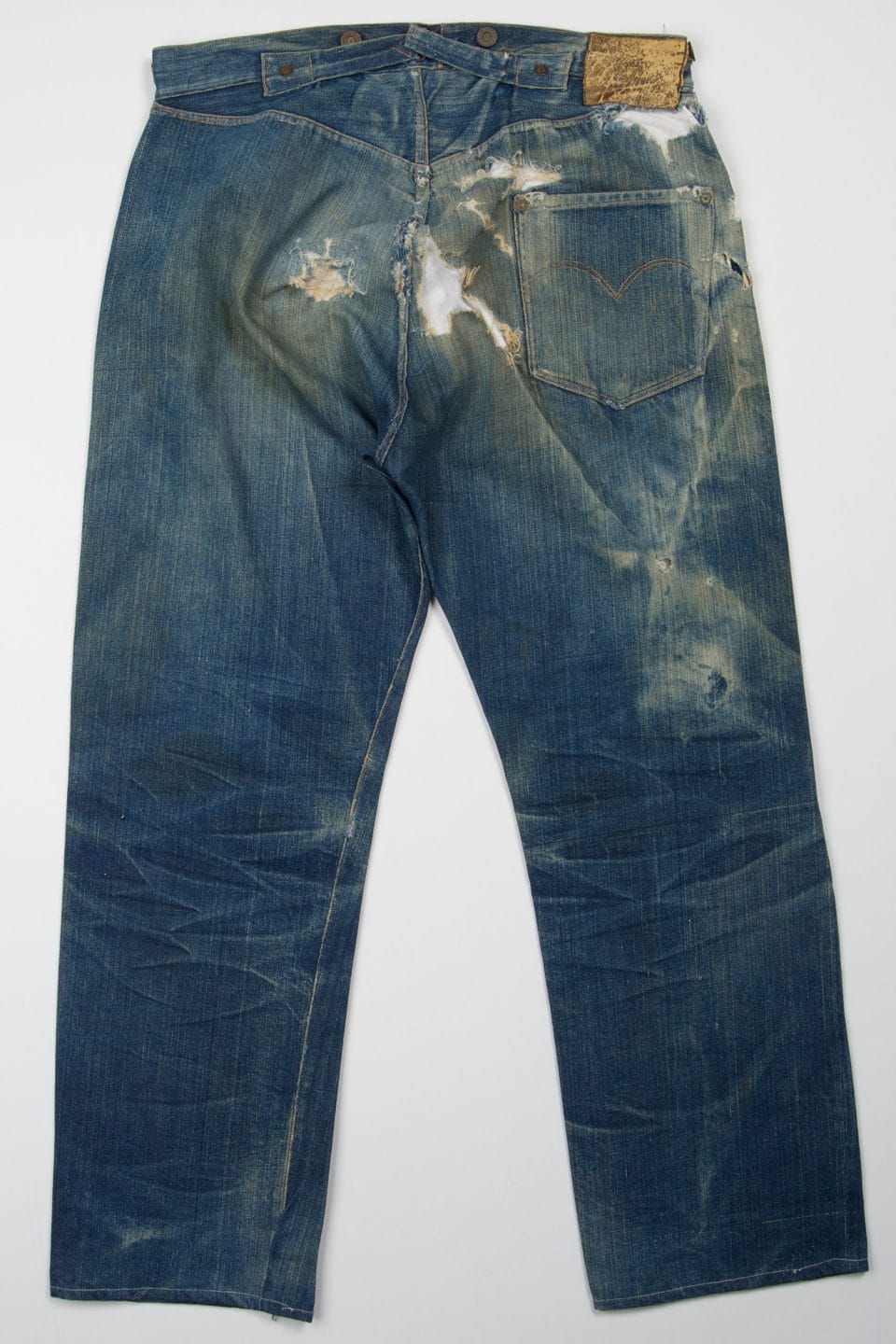 Calico Mine waist overalls circa 1890
Calico Mine waist overalls circa 1890
Having the back story of how they’re found, who wore them, and how they’ve been used since we first started making 501s is part of what is my role so that I can make the interpretations — here’s the company’s history and here’s how people wore them.
Paul, how do you appraise what good design is when it comes to a pair of jeans?
Well, the best example of good design for a pair of jeans is the 501s — it was only designed for functional and practical reasons, never for fashion and what was on trend. Form follows function; it’s simple.
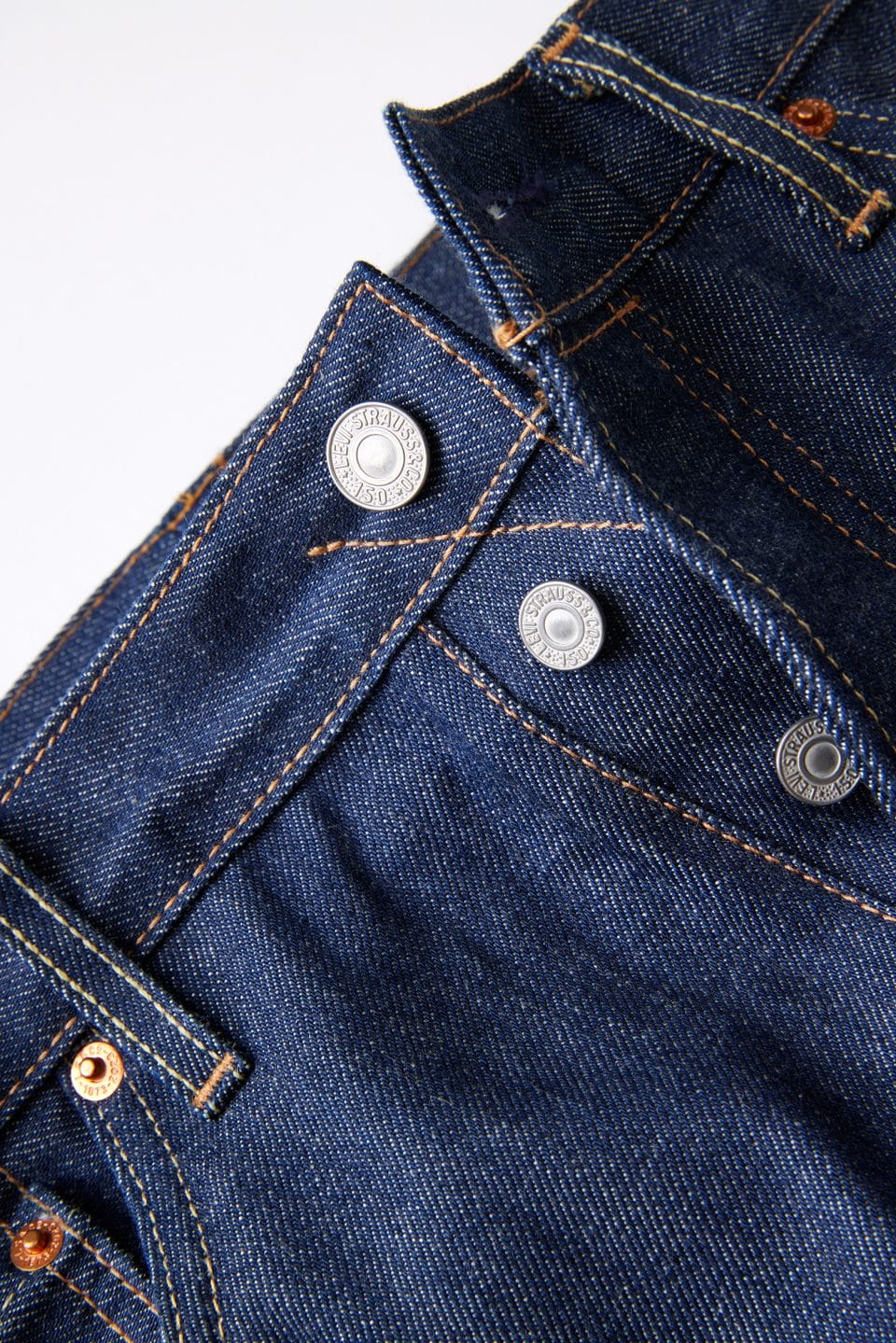 The practical designs — such as how many pockets the 501s need to have or where the pockets should be on the garment to function best — are what I appreciate the most. I also love to look at historical military products because they’re designed for functionality, and that creates something timeless and beautiful.
The practical designs — such as how many pockets the 501s need to have or where the pockets should be on the garment to function best — are what I appreciate the most. I also love to look at historical military products because they’re designed for functionality, and that creates something timeless and beautiful.
This year is the 150th anniversary of the Levi’s 501. Talk us through the story of the world’s first blue jeans from a design director’s and a historian’s point of view.
P: The birth of blue jeans, from my perspective, stemmed from a need for strong jeans. People in the American West were working very hard and needed something strong to wear, so blue jeans were worn. An amazing invention by Jacob Davis, who partnered with Levi Strauss, added the rivet to the jeans, strengthening them.
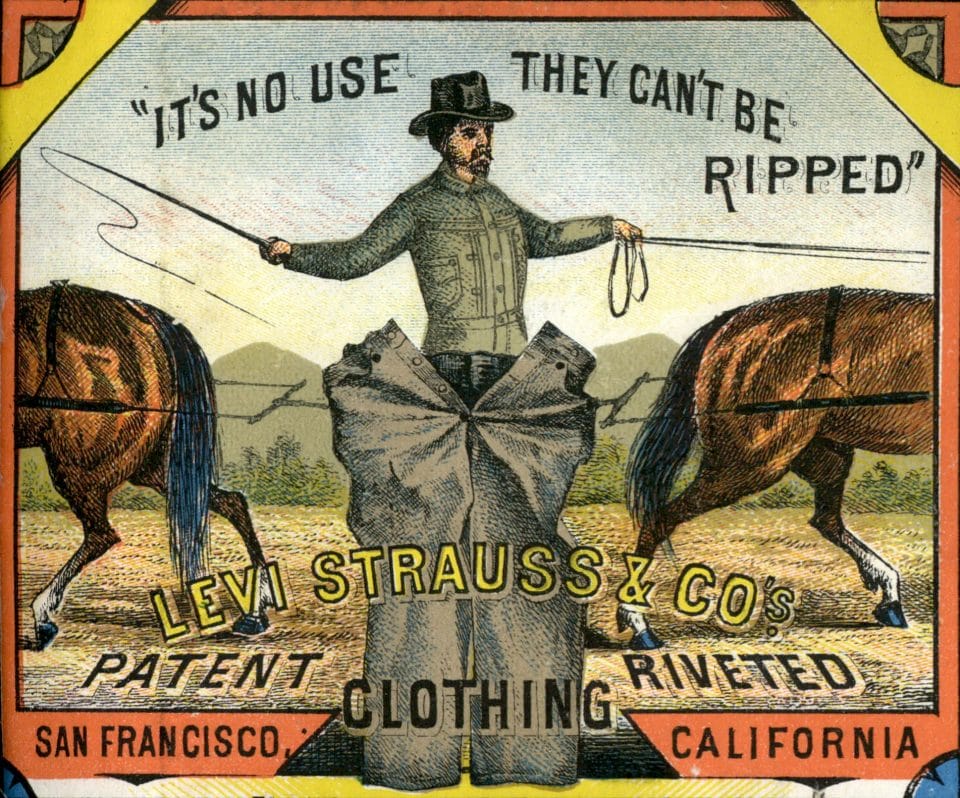 That was the birth of the blue jeans, which came out of necessity. They built this whole company on this one rivet, this one idea that spawned the blue jeans and now the 501s. As Tracey mentioned, half the people in the world are wearing blue jeans and blue jeans weren’t designed for people to walk around the streets sipping coffee and cappuccino, right? They were designed for real hard work, and that’s the beauty of it, that it was a functional garment. I’d let Tracey tell you the story.
That was the birth of the blue jeans, which came out of necessity. They built this whole company on this one rivet, this one idea that spawned the blue jeans and now the 501s. As Tracey mentioned, half the people in the world are wearing blue jeans and blue jeans weren’t designed for people to walk around the streets sipping coffee and cappuccino, right? They were designed for real hard work, and that’s the beauty of it, that it was a functional garment. I’d let Tracey tell you the story.
T: The story is simple, but the idea really symbolises what Levi’s is about. It’s about a collaboration between two men with a very innovative idea. It was a small one, but it made a huge difference. The two men, both immigrants to America, were willing to do something to fill a practical need, as Paul mentioned. You have two understandings that they can work together to achieve the best goal.
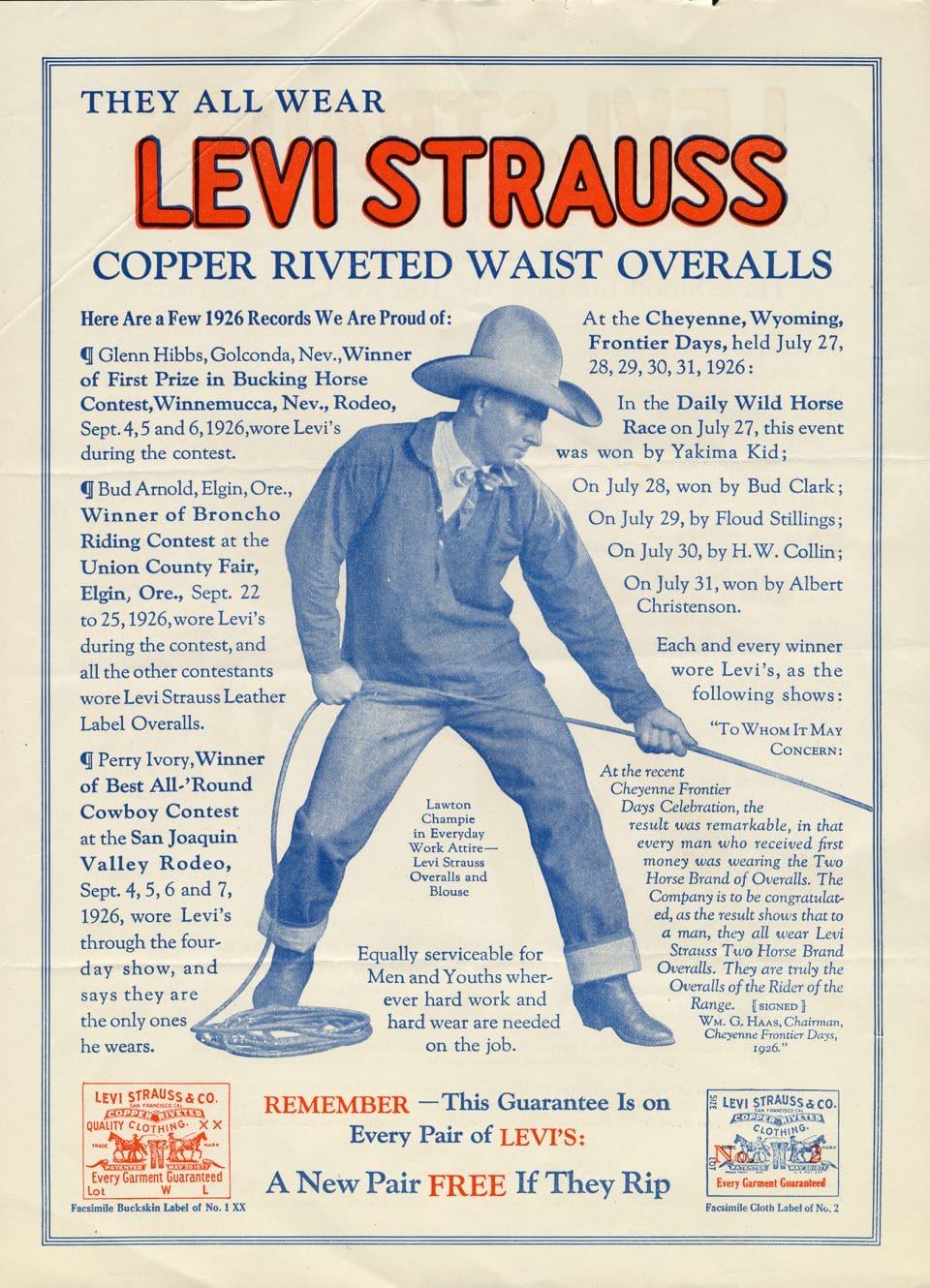 One is a product that is now global, and the other, with the experience of a company and entrepreneur who knows how to get them out to the public. Levi is the man who gave blue jeans to the world. And this partnership in creating tough quality pants, the legacy speaks for itself.
One is a product that is now global, and the other, with the experience of a company and entrepreneur who knows how to get them out to the public. Levi is the man who gave blue jeans to the world. And this partnership in creating tough quality pants, the legacy speaks for itself.
Fashion and culture are riddled with the blue handprints of the Levi’s 501. How do you think the Levi’s 501 has shaped fashion and culture globally?
T:I can rattle off a few examples of distinctions that the 501 has received. In 2000, Time magazine dedicated a magazine to the best inventions of the 20th century and the 501 was selected as the fashion item of the 20th century. Several years ago, two sociologists got together to do a study on global denim because they’d seen blue jeans all over the world. They assessed that you could go about anywhere in the world and observe what people are wearing, and you will likely find in most cases that about half of them are wearing blue jeans. So often when I travel, I try to do that; that all began with the 501, with that original modern blue jeans, the riveted pant, and now this concept, these blue jeans, is the default global garment.
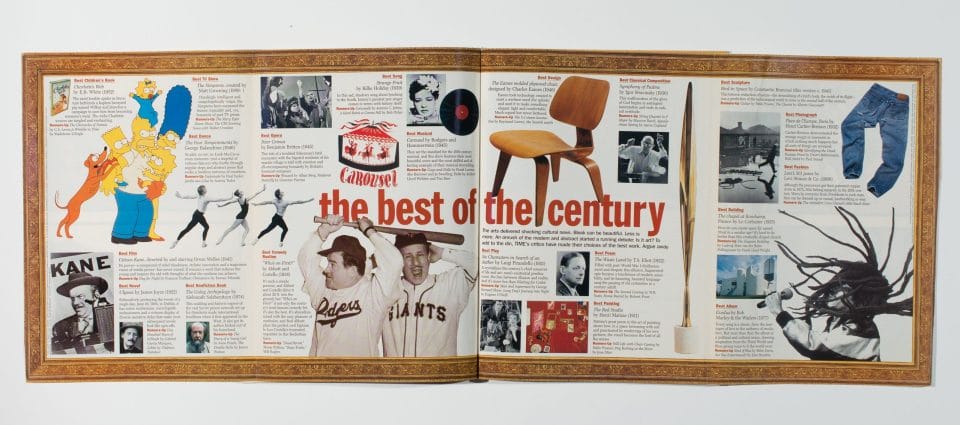 P: As Tracey said, it’s this humble beginning that this one little simple product that was there to make a work guy’s life easier and last longer develops into this rebel-wear garment, which is shocking. People wore these workwear items as casual wear; from there, just about everyone wore them. There are very few things that happen like that.
P: As Tracey said, it’s this humble beginning that this one little simple product that was there to make a work guy’s life easier and last longer develops into this rebel-wear garment, which is shocking. People wore these workwear items as casual wear; from there, just about everyone wore them. There are very few things that happen like that.
There’s something very perfect about a pair of 501s, and it’s to do with it being very simple, never really changing, and accessible to everybody. It appeals to everybody because it was designed for everybody. You wear the 501s; they don’t wear you.
When people mention the digit 501, Levi’s naturally comes to mind. How does Levi’s continue to strengthen brand recall and association, especially when a new demographic of consumers might not even know what Levi’s is?
T: It’s part of our role to be able to tell the stories to the next generation, and that’s a lot of what I do. I gather stories, I tell them, and the campaign, “150th, The Greatest Story Ever Worn”, is all about telling old stories to new audiences and letting them understand just how long it’s been happening. I love the stories, especially those that are intergenerational.
P: From my perspective, every generation ends up finding the 501. The 501 is the ultimate blank canvas. You can take the hippies in the 60s, punks in the 70s or the hip hop kids in the 90s, and they’ll all think about how they want to use the 501 and make it unique to them. I think all generations will find the 501, maybe through collaborations with more contemporary brands that are interesting to these generations, that might be the first way they’ll realise or learn more about the 501.
Paul, you spearhead the much beloved Levi’s Vintage Clothing and Levi’s Made in Japan collection. With consumers becoming more discerning, how do you keep up with their tastes and preferences?
Both Levi’s Made in Japan, and Levi’s Vintage Clothing are different. We dig into historical pieces with Levi’s Vintage Clothing and have different versions of the 501, no matter if you’re into baggy or slim fits. A discerning customer should appreciate Levi’s Vintage Clothing. Levi’s Made in Japan is more about craftsmanship and Japanese denim, with a slightly more contemporary fit or washing.
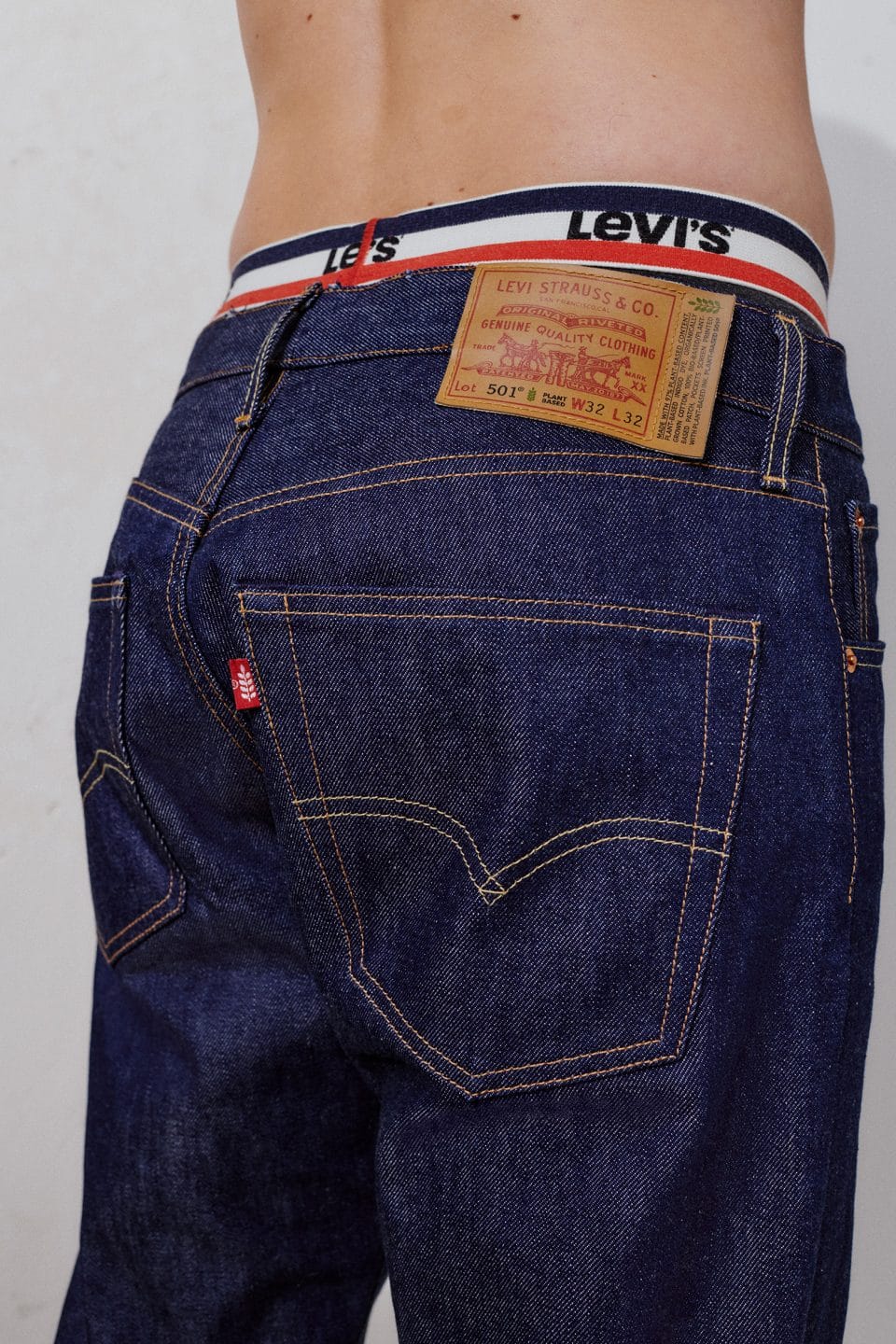 I don’t pay attention to fashion or trends. But of course, we all breathe the same air and see things at the same time, so we pick up on what people want. I’ve learned through Levi’s that staying authentic is more important than jumping on a trend.
I don’t pay attention to fashion or trends. But of course, we all breathe the same air and see things at the same time, so we pick up on what people want. I’ve learned through Levi’s that staying authentic is more important than jumping on a trend.
What are your fondest memories of the Levi’s 501?
P: I’m originally from Ireland, so America was very far away in the 80s. I would see the 501s in movies or on record sleeves. I wore denim jeans or drank cola, but they weren’t branded like 501s or Coca-Cola. I had this friend, who always had 501s on and drank Coca-Cola, who brought me to the store during Christmas when I was about 11 to buy a pair of 501s after my parents gave me permission. I remember feeling really cool when I put them on that day. That’s my first memory of the 501.
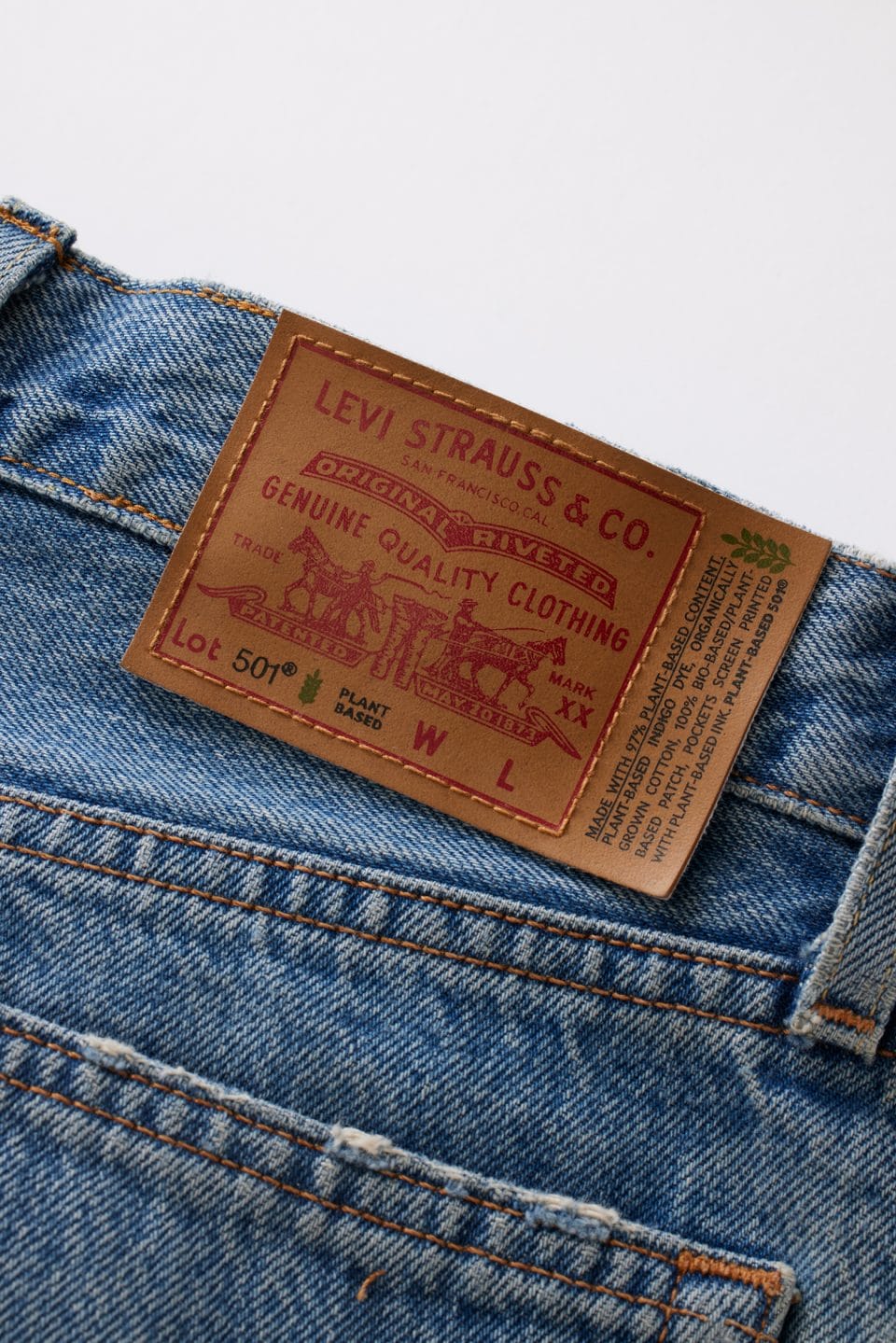 T: I got my first 501 in high school. I have three sisters, and we all wanted 501s because, like Paul, we wanted to look cool. The 501 I got was the Shrink-to-fit. You would buy them, wash them several times, and they fit you like a glove after they shrink. I was wearing 501 when I first met my husband, who’s a big 501 fan as well.
T: I got my first 501 in high school. I have three sisters, and we all wanted 501s because, like Paul, we wanted to look cool. The 501 I got was the Shrink-to-fit. You would buy them, wash them several times, and they fit you like a glove after they shrink. I was wearing 501 when I first met my husband, who’s a big 501 fan as well.
Lastly, What do you think is the defining spirit of the Levi’s 501?
P: Well, the spirit of the 501 makes me feel like myself. It’s what I said a minute ago, and it resonates with me now to think about it, you wear the 501, the 501 doesn’t wear you. In some respects, I don’t notice a pair of blue jeans when I put them on. It becomes a part of me and makes me feel comfortable and free. That’s the spirit of the 501.
T: We often use the term we’re a democratic brand, but a better way to understand that is that we are a brand that started with everyday people at the bottom of the economic ladder. We didn’t start as a luxury item, and that’s part of what that spirit is about. Everyone can wear it because it’s incredibly accessible and makes them feel comfortable, casual, and cool; all of those things Levi’s represents.
Celebrate 150 years of the 501 Jean at 72-13 this May 20 & 21, click here for more details. Once you’re done with this story, catch up with the rest of our May 2023 issue here.


